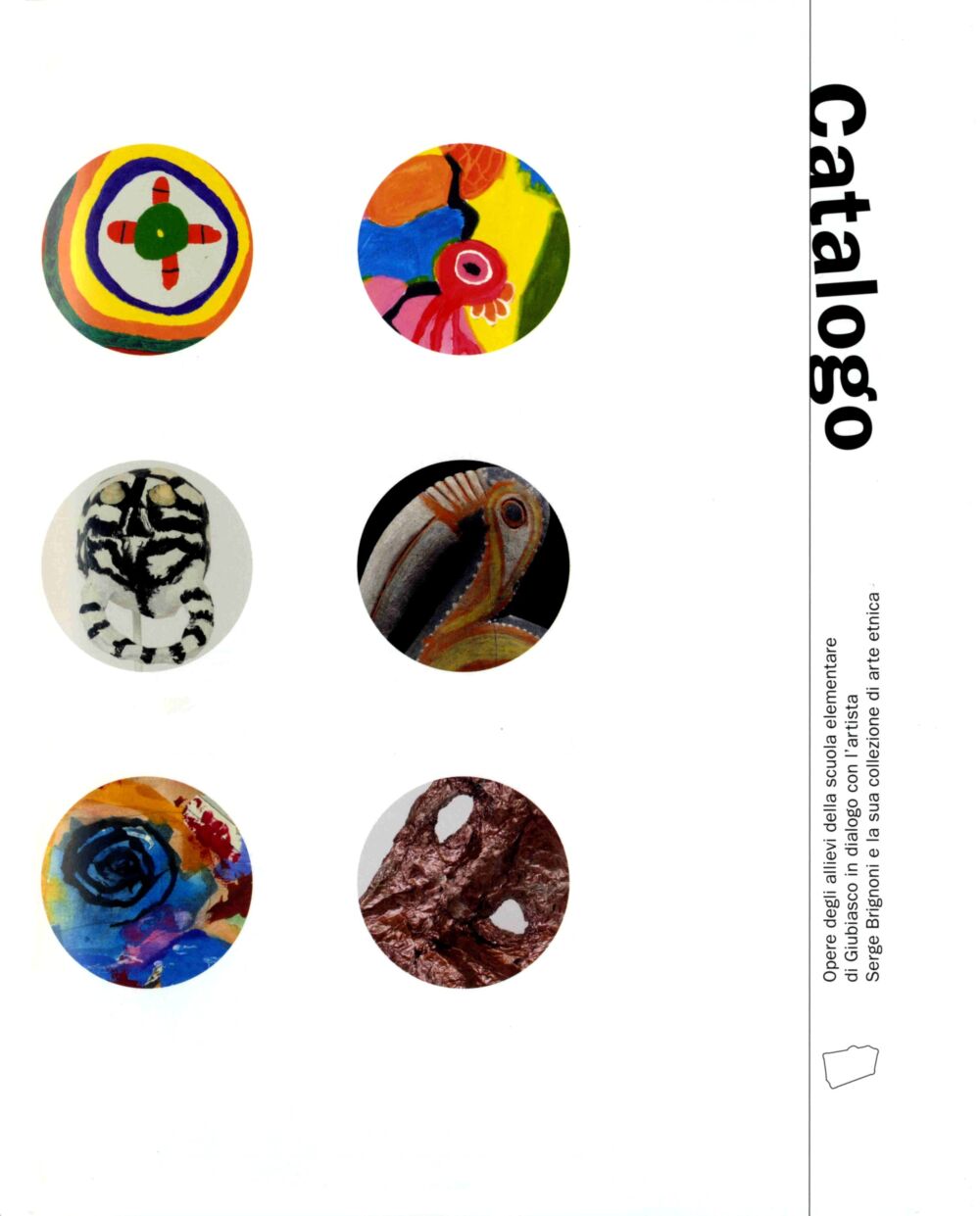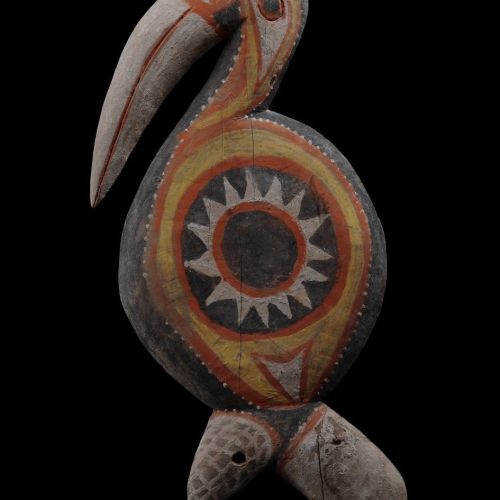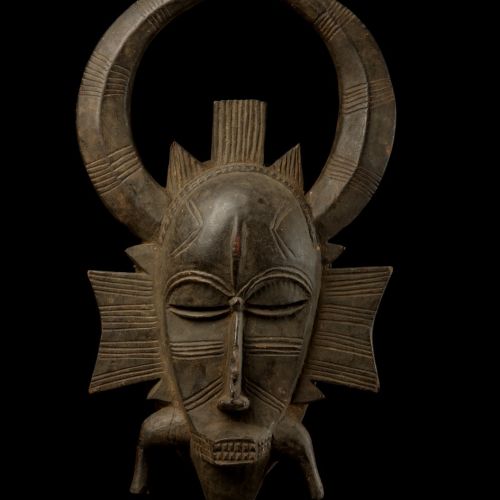The exhibition, curated by Igor Nastic, a primary school teacher and MUSEC collaborator, showcases the outcome of a three-year pedagogical and artistic project. In the exhibition, in fact, the works of Nastic’s pupils, who attend the Giubiasco Primary School, ‘dialogue’ with works by the artist Serge Brignoni and with works from his collection of ethnic art exhibited at MUSEC. For the occasion, the museum lent three masterpieces from Oceania and Africa, normally displayed in the Heleneum rooms. The first work is a kpelie mask from the Ivory Coast, part of a disguise worn during dances at initiations by the exclusive male Poro society, responsible for social control and instruction in religious knowledge and the knowledge of forest spirits. The kpelie was also used in funeral rituals and in ceremonies of thanksgiving to the ancestors for a good harvest. Also, on display are two works from Papua New Guinea: a teket, a large sculpture in the shape of traditional ceremonial seats that embodied spirits or clan ancestors, and a pal, a sculpture depicting a hornbill, an animal of great importance in the Abelam culture. This sculpture was customarily hung below the frieze ends of the façade of a ceremonial house, the centre of worship activities and social events. The exhibition is the result of collaboration between the City of Bellinzona, Bellinzona Turismo, MUSEC and the Serge and Graciela Brignoni-Aranis Foundation of Bern; and with the support of the Dr. Hans Dietler-Kottmann Foundation of Lugano.

The Dèibambini project was founded in 2005 as a platform for interaction between the museum and the school. In its first ten years, the project allowed children to engage with different themes, with the aim of increasing their awareness of their own potential and inner vision and strengthening their ability to interpret the world. Since 2022, the starting point has been the works of children from the past. The idea is to build a bridge between the children’s creativity of yesterday and today, through the in-depth exploration of expressive content that not only interconnects cultures, but has served as an extraordinary source for the renewal of artistic languages in the 20th century. A solid bridge, full of poetry, to connect the generations.



